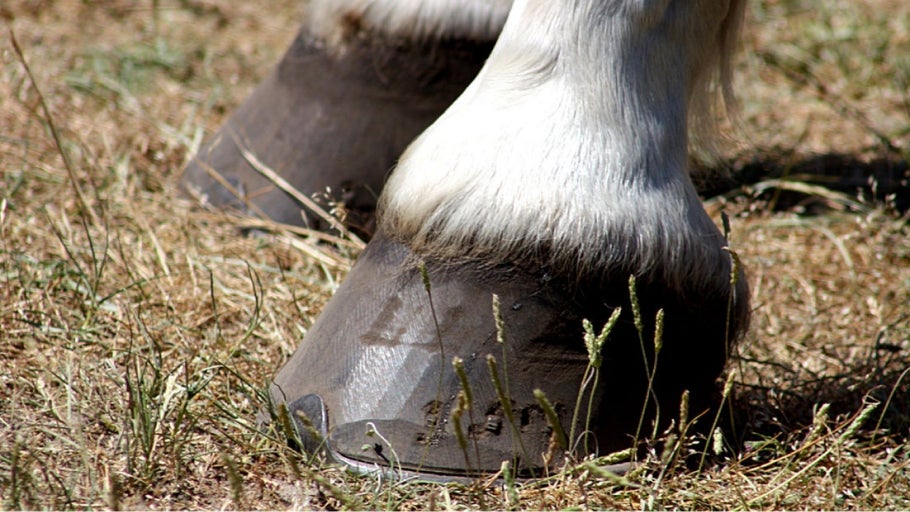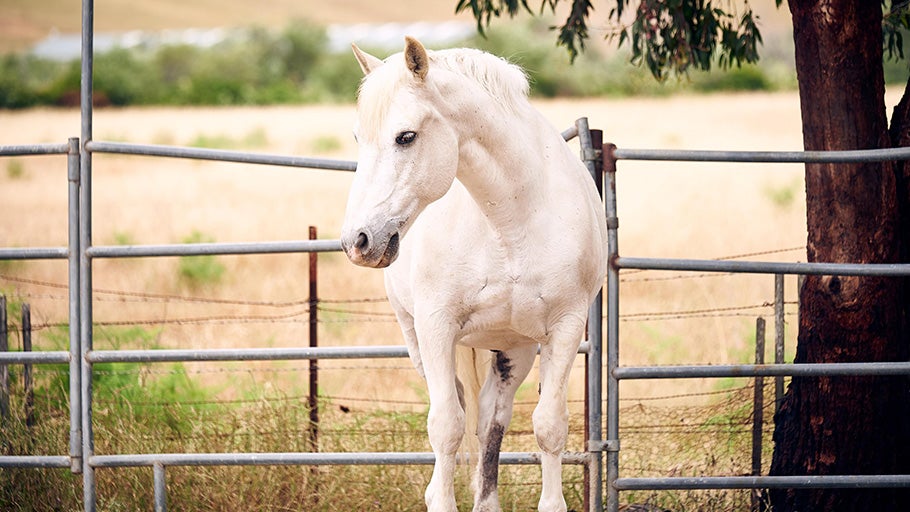
How to Soak & Wrap a Horse Hoof
Applying a wrap or bandage to a horse's hoof is an important skill for stable managers and horse owners, as it can help treat many equine hoof problems. Always consult with your vet or farrier before treating the hoof, because they may prescribe a particular protocol.
With this guide, you'll learn how to easily wrap your horse's hoof for abscesses or stone bruises, or even to offer padding or protection after a hard workout.
Hoof Soaking & Wrapping Supply List
These hoof care supplies are helpful for soaking and wrapping a horse's hoof:
- Soaking Bucket/Soaking Hoof Boot - Used for soaking the hoof
- Epsom Salts - When mixed with water, helps pull out infection or excess heat
- Hoof Pick - Removes any debris left in the hoof after soaking
- Disposable Gloves - Protects your hands against poultice/packing material
- Packing Material - Draws infection or heat out of the hoof
- Diaper/Sheet Cotton - Keeps poultice or packing material inside the hoof
- Scissors - To cut duct tape, vet wrap, and Elastikon
- Vet Wrap - Covers the baby diaper/sheet cotton, keeping it in place
- Duct Tape/EquiFit Tape - Covers vet wrap and offers a protective barrier from the elements and ground
- Elastikon - Helps keep debris out and the hoof bandage secure
Products Needs to Wrap a Hoof Abscesses
How to Soak a Horse Hoof
The first step is to soak the foot in water and Epsom salt to help draw out any infection or heat from the hoof. Simply use a small bucket or pan, a couple of cups of Epsom salt, and warm water (if possible). If warm water isn't available, cold water will work. Try to soak the foot for twenty to thirty minutes. If your horse won't stand still for that long, we offer a variety of hoof-soaking boots, which can make the process much easier on both horse and human.
How to Wrap a Hoof with Duct Tape
While your horse's foot is soaking, you can use the time to make your duct tape boot. Find a flat surface, such as a table or wall, and tear or cut 7" to 10" strips of tape off of the roll. Adjust the length of these strips according to the size of your horse's hoof, as they will end up covering the bottom of the foot. Place the strips vertically and somewhat overlapping. Once you make one vertical layer, you are going to make another layer going horizontally. This makes a kind of "weave" pattern. Trim the edges to form a circular shape.
If you don't want to make a duct tape boot, we do offer the EquiFit Pack-N-Stick Hoof Packing Tape. However, this isn't as durable as making your own boot, especially if you need the wrap to last over 24 hours.
How to Wrap a Hoof Abscess in 10 Easy Steps
- Dry the hoof thoroughly and clean any remaining material out with a hoof pick.
- Gather all the items you need and have them close by and accessible.
- Put on disposable gloves to keep the packing material off of your hands.
- Apply the poultice to the entire sole and frog of the affected hoof.
- Apply a baby diaper, making sure the "wings" are facing toward the back of the hoof.
- Wrap the wings around the outside of the hoof wall. You can also use a square piece of sheet cotton wrapped around the bottom of the hoof. Both options will help keep the poultice in place.
- Apply vet wrap to secure the diaper or cotton to the hoof.
- Cover the bottom of the foot with your duct tape patch, making sure that it isn't too large and doesn't touch the skin at the back of the heel or above the coronet band.
- Cut off separate strips of tape and apply them to the toe area since it receives the most wear and tear.
- Unroll and cut the amount of Elastikon tape you want so that it does not constrict when applied to the leg. Put the Elastikon on top of the duct tape/vet wrap so that it touches the skin. This will ensure the bandage stays in place while keeping debris out of your DIY hoof boot.
We invite you to watch our video tutorial below and follow along here!
Frequently Asked Questions
How long should I wrap a hoof abscess?
How long to wrap a hoof abscess, hoof bruise, or other condition depends on the severity of the situation and your horse's individual recovery rate. As a general guide, we suggest leaving your hoof boot on for 24 to 48 hours at a time, then changing it out for a clean one as needed to allow airflow to your horse's hoof and minimize bacteria growth. In any case, you should make sure your treatment aligns with the protocol suggested by your vet or farrier.
What size diaper do I need to use?
For an average sized horse, a size 3 or size 4 diaper should be sufficient to create your hoof boot. Of course, if you have a smaller or larger horse, those sizes may need to be adjusted. For example, for a draft horse, you may need to use a size 5 diaper to make the hoof boot.
Closing Thoughts
While soaking and bandaging our horse's hooves is never something we want to have to do (we don't want to see our equine companions in pain), it is an important skill for horse owners and caretakers to have. However, having the necessary supplies on hand when you need them can make the process less stressful. We hope that this article has outlined everything you wanted to know about soaking and bandaging your horse's hooves.
As always, if you have any questions about anything you have read, our customer service team is happy to help and may be reached at info@ridingwarehouse.com or at 1-800-620-9145. We always strongly recommend following the advice of your vet and farrier when it comes to the health and well-being of your horse. Ride on!
Related Articles:




















